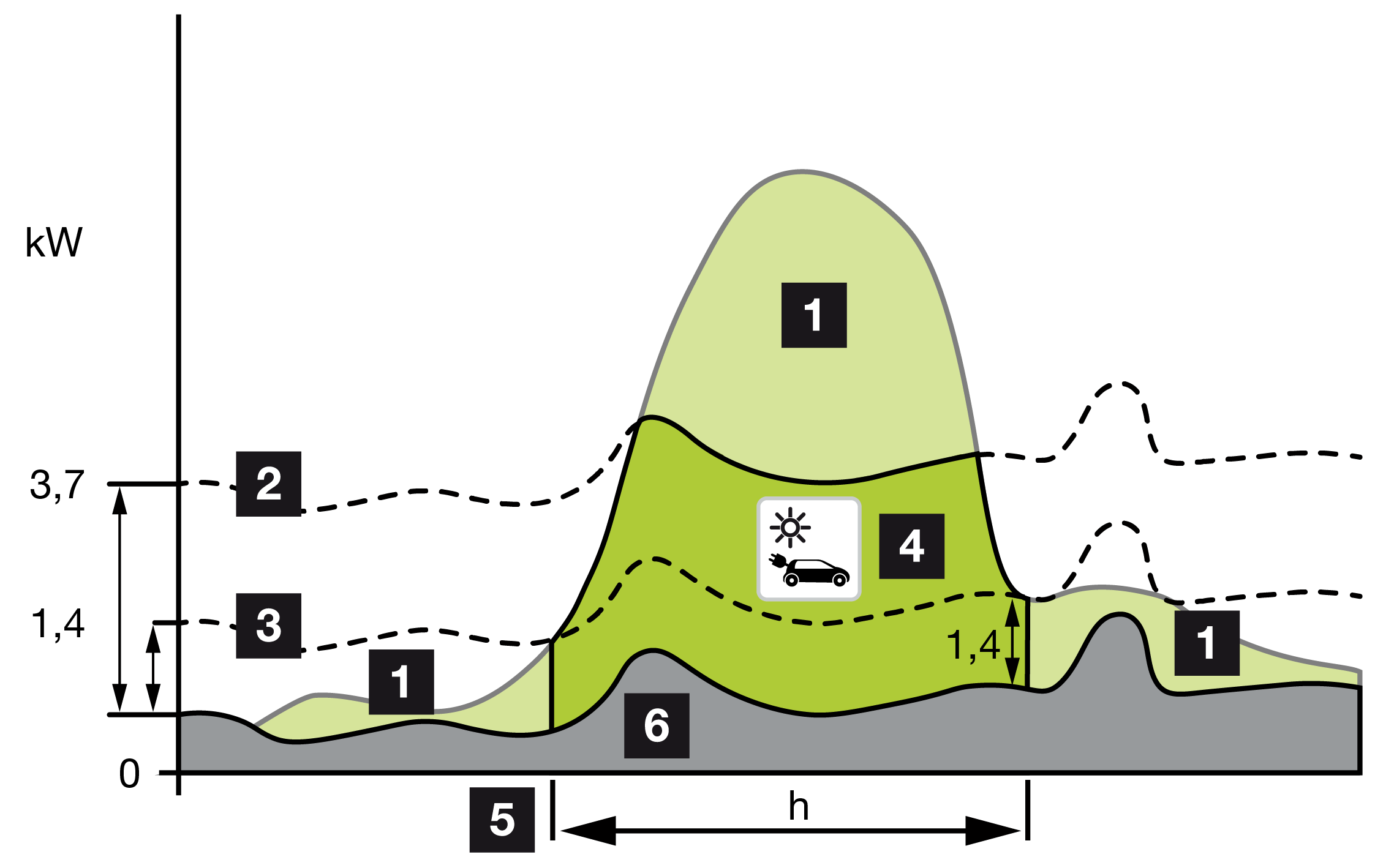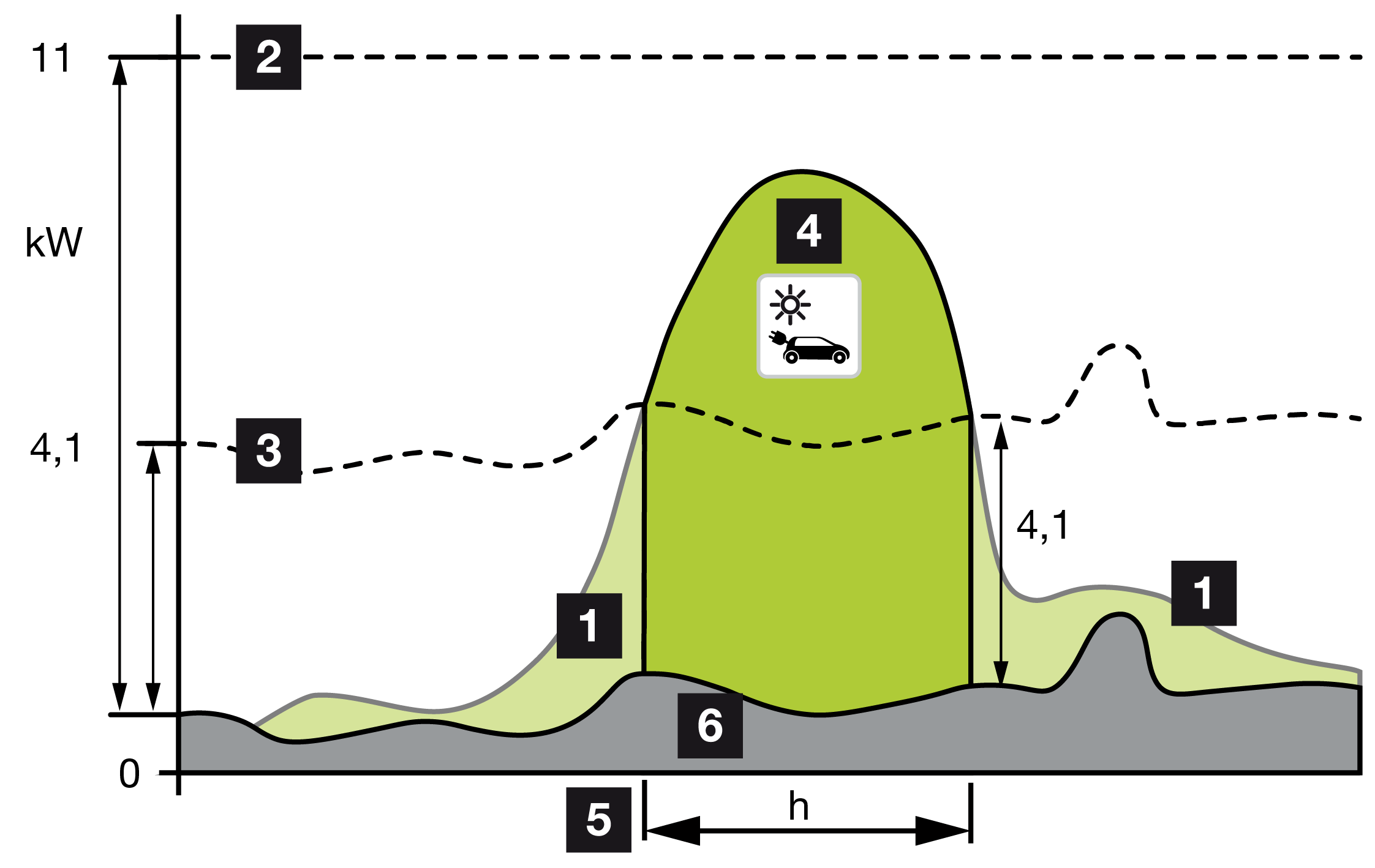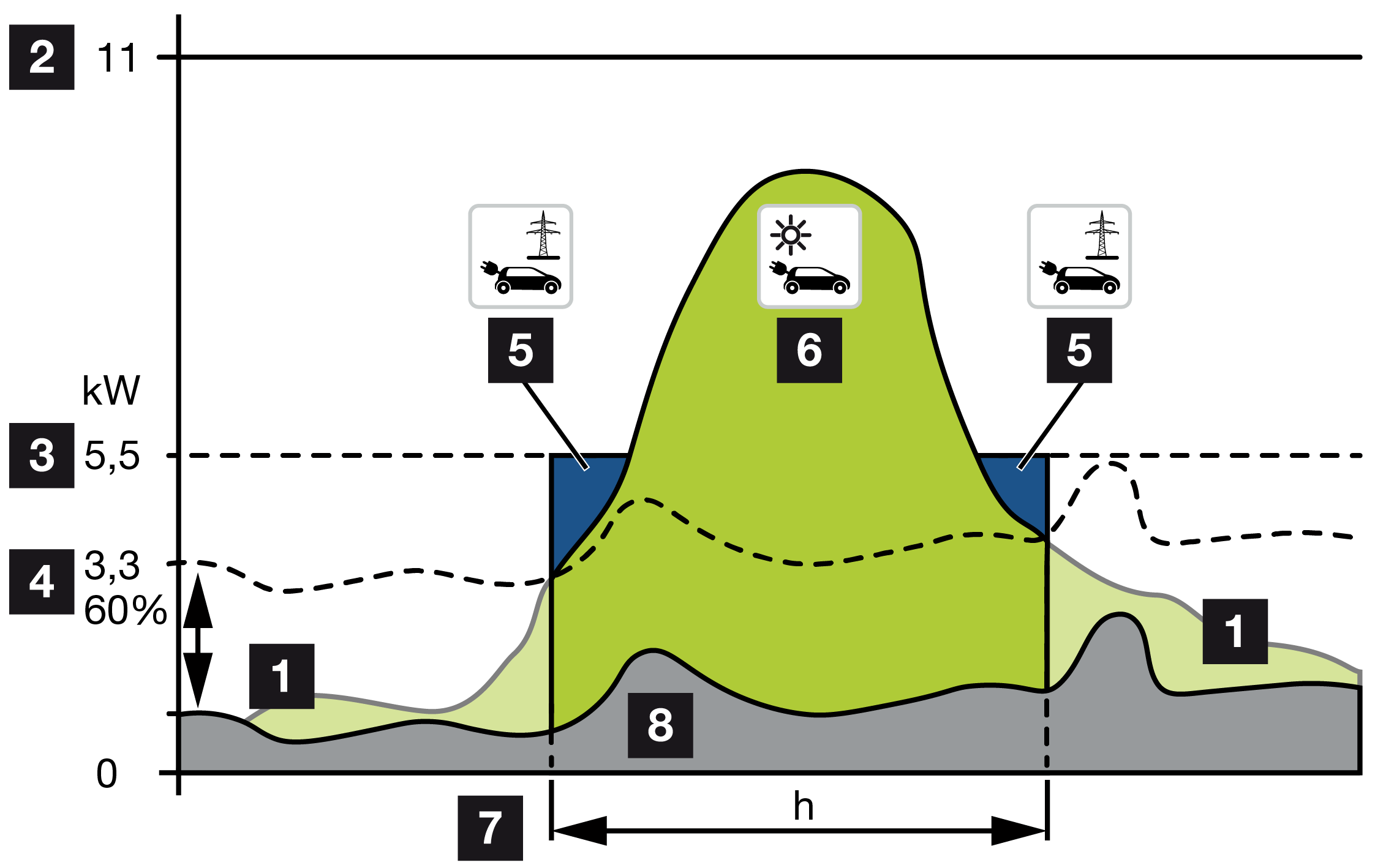ENECTOR with convenience functions via KOSTAL Smart Energy Meter
INFO

In order for the wallbox to be set up for the convenience functions in the KOSTAL Smart Energy Meter (KSEM), this function must first be activated via an activation code in the KSEM.
The activation code can be purchased from the KOSTAL Solar online shop.
To access the shop, go to: shop.kostal-solar-electric.com.
INFO

A list of approved energy meters and their purpose is available in the download area for the product on our homepage at
www.kostal-solar-electric.com/released-energy-meters-wallbox

Blackout protection (house connection monitoring)
The house connection is monitored when charging the electric vehicle. If the maximum connected load (e.g. 63 A) is exceeded, the charging power is reduced or charging is interrupted.
Lock Mode (lock wallbox)
If a KOSTAL Smart Energy Meter (KSEM) is connected to the wallbox and the wallbox has been activated via an activation code in the KSEM, the wallbox can be locked via the KSEM. It can then only be unlocked by selecting another mode in the KSEM.
Power Mode (simple charging)
The electric vehicle is charged at maximum power.
Solar Pure Mode (solar charging)
Solar charging is only possible in combination with a PV system and the KOSTAL Smart Energy Meter. The PV system supplies the power needed to charge the electric vehicle.
The function is usually actively selected via the user interface of the KOSTAL Smart Energy Meter.
If an optional push-button (not included in the scope of delivery) has been fitted in the device, the push-button can be used to switch between all modes (except Lock Mode).
With this function, the electric vehicle is only charged using the PV surplus.
For electric vehicles that are charged 1-phase, the charging power is between 1.4 and 3.7 kW. This means that charging is only started when at least 1.4 kW of surplus PV energy is available and is interrupted or terminated when this falls below 1.4 kW.

For electric vehicles that are charged 3-phase, the charging power is between 4.1 and 11 kW. This means that charging is only started when at least 4.1 kW of surplus PV energy is available and is interrupted or terminated when this falls below 4.1 kW.

1 | PV surplus |
2 | Max. wallbox charging power 3.7 kW (with 1-phase vehicle) Max. wallbox charging power 11 kW (with 3-phase vehicle) |
3 | Min. wallbox charging power 1.4 kW (with 1-phase vehicle) Min. wallbox charging power 4.1 kW (with 3-phase vehicle) |
4 | Charging electric vehicle with PV surplus |
5 | Electric vehicle charging time |
6 | Home consumption of other devices - partly covered directly from PV. |
INFO

Hysteresis for passage of clouds (changing cloud cover): If the surplus needed to charge the vehicle is no longer available due to further consumers or the passage of clouds, charging is not interrupted immediately. Instead, it is reduced to the minimum charging power for approx. 5 min to avoid an interruption in charging after the vehicle has frequently switched charging on and off.
Solar Plus Mode (solar-optimised charging)
Solar-optimised charging is only possible in combination with a PV system and the KOSTAL Smart Energy Meter. The PV system supplies the energy needed to charge the electric vehicle.
The function is usually actively selected via the user interface of the KOSTAL Smart Energy Meter.
If an optional push-button (not included in the scope of delivery) has been fitted in the device, the push-button can be used to switch between all modes (except Lock Mode).
With this function, the charging power specified by the customer is made available to the vehicle for charging.
If there is a PV surplus at the grid interconnection point, the amount drawn from the grid is replaced by the PV power or, if possible, increased to the PV surplus.
If desired, a minimum PV surplus power can also be defined here. This is the minimum level which must be present before charging is started at the power level defined by the customer. If the surplus power falls below the defined minimum value, charging is stopped again.
This function can be used to charge the electric vehicle in the evening, for example, when there is no longer enough PV energy available but the electric vehicle needs to be charged for the next morning.

1 | PV surplus This surplus can also be used to charge a battery. |
2 | Max. wallbox charging power 11 kW (3-phase). |
3 | Fixed minimum starting charging power In this example, at 50 % of the max. charging power of 11 kW (for 3-phase connection with 3-phase vehicle = 5.5 kW). |
4 | Set min. surplus power at the grid connection point before charging is started. In this example, 60 % of 5.5 kW = 3.3 kW. The additional charging power of 2.2 kW (5) is drawn from the public grid. |
5 | Charging electric vehicle from the public grid. In this example 2.2 kW. |
6 | Charging electric vehicle from PV surplus. |
7 | Electric vehicle charging time. |
8 | Home consumption of other devices - partly covered directly from PV. |
INFO

Hysteresis for passage of clouds (changing cloud cover): If the surplus needed to charge the vehicle is no longer available due to further consumers or the passage of clouds, charging is not interrupted immediately. Instead, it is reduced to the minimum charging power for approx. 5 min to avoid an interruption in charging after the vehicle has frequently switched charging on and off.